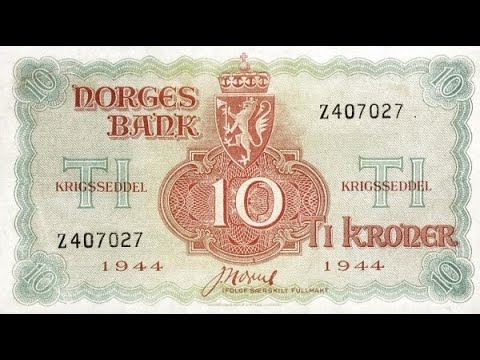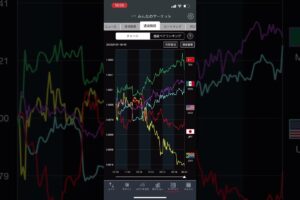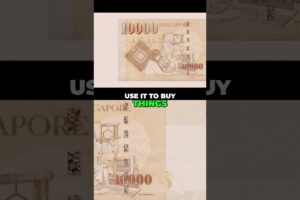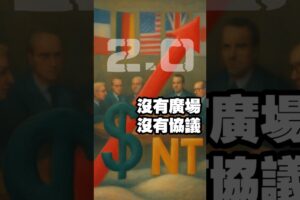In this video, I will show you banknotes that at different times were or remain money in Norway.
There are some very beautiful pieces of art among them.
The Norwegian krone is the national currency of Norway. Consists of 100 era.
Norway, officially the Kingdom of Norway, is a state in Northern Europe, located in the western part of the Scandinavian Peninsula and on a huge number of adjacent small islands, as well as the Spitsbergen (Svalbard) archipelago, Jan Mayen and Bear Islands in the Arctic Ocean.
Bouvet Island is a Norwegian overseas territory in the South Atlantic Ocean. Norway also claims territories in Antarctica that fall under the 1961 convention – Peter I Island and Queen Maud Land.
The capital of Norway and the seat of government is Oslo.
Norway: banknotes 1875-1956
Banknotes 1877-1901 (Series I)
Under the Money Act of 17 April 1875, the speciedaler and the skilling were replaced by kroner and øre. New notes were therefore necessary.
The Oscar II series ushered in the era of modern Norwegian banknotes and was the first and only series to feature the monarch’s portrait on the obverse. The notes were printed on white paper using copper plate and multicolour letterpress techniques. The sketches for the copper plates were done by the architect Eilert Chr. Christie of Trondheim, while paper and engravings were supplied by Saunders in London.
Initially, the obverses were also printed in London, while the reverse sides were printed at Norges Bank’s printing works in Trondheim, until a copper plate printing press was acquired in 1891. From the same year, paper was supplied by the Swedish central bank’s printing works in Tumba near Stockholm. Each note was dated and signed by hand.
Banknotes 1901-1945 (Series II)
The painter Oluf Wold-Torne was responsible for the artistic design of the notes in Series II, which were engraved by Bradbury, Wilkinson & Co. Ltd. in London. Initially, they were also printed in London on paper from Austria, but from 1907, all banknotes were printed in Norway on paper manufactured by Alvøens Papirfabrikk Ltd near Bergen.
Over the course of the long life of this banknote series (1901 to 1945), only minor changes were made to the grade of paper, the style of printing year dates and serial numbers and a few other details.
During the Second World War, a decision was made to withdraw and completely replace the mass of banknotes in circulation once the war was over. This replacement took effect on 9 September 1945, and as from the same date, all Series II notes ceased to be valid as legal tender.
Banknotes 1945-1955 (Series III)
This series is usually referred to as the “replacement notes” and entered into circulation on 9 September 1945.
Design work was initiated in 1944 and had to take place in secrecy. The series was intended to be emergency banknotes that could be produced quickly and that would be replaced as soon as possible by notes of higher artistic quality and technical standards. There was no 500-krone note in this series.
Banknotes 1948-1976 (series IV)
Work on this banknote series began before the Second World War. In 1930, an artistic competition was held to design a new banknote series, but the war put a stop to its realisation. Since none of the winning designs were deemed suitable, the architect Arnstein Arneberg was engaged as an artistic collaborator.
The series was to feature portraits of prominent Norwegians from the recent past on the obverse, with illustrations of the most important industries on the reverse. The engravings for the 10-krone and 100-krone banknotes were done before the war by the firm Thomas de la Rue in London, while the other banknotes in the series were engraved by Henry Welde, a graphic designer at Norges Bank’s Printing Works.
Small denomination notes
The two world wars created a pressing need for cash. The demand for coins was especially acute, relative to the number that could be minted.
In 1917, the following appeared in Proposition No. 70 to the Odelsting: “In a letter of 8 September 1917, the Board of Norges Bank has notified the Ministry that the shortage of coins has now become absolutely intolerable. One business after another complains of their inability to pay their workers promised wages, nor are merchants able to give change for customers’ banknotes”.
This resulted in legislation permitting the issuance of 2-krone and 1-krone notes.
#Notaphily #Notaphily #Бонистика #Боністика #Notafilia #Billetophilie #Баністыка #Notafilie #Bonistika #Notaphilie #Бонистика #Notafilija #Բոնիստիկա #ბონისტიკა #Notafili #Notafília #지폐 수집 #பணத்தாள்கள் #சேகரிப்பு #bonistique











⭐⭐⭐⭐⭐
Think you forgot the set before the 2017-editions
Banknotes: 1, 2, 5, 10, 50, 100, 500, 1000 Kroner, 1942-1944
Government in Exile
Period: German occupation (1941-1945)
In the last video, I forgot to include NOK 500 and NOK 1000 for 2017-2021, so I put them in this video.
In this video, I will show you banknotes that at different times were or remain money in Norway.
There are some very beautiful pieces of art among them.
The Norwegian krone is the national currency of Norway. Consists of 100 era.
Norway, officially the Kingdom of Norway, is a state in Northern Europe, located in the western part of the Scandinavian Peninsula and on a huge number of adjacent small islands, as well as the Spitsbergen (Svalbard) archipelago, Jan Mayen and Bear Islands in the Arctic Ocean.
Bouvet Island is a Norwegian overseas territory in the South Atlantic Ocean. Norway also claims territories in Antarctica that fall under the 1961 convention – Peter I Island and Queen Maud Land.
The capital of Norway and the seat of government is Oslo.
Norway: banknotes 1875-1956
Banknotes 1877-1901 (Series I)
Under the Money Act of 17 April 1875, the speciedaler and the skilling were replaced by kroner and øre. New notes were therefore necessary.
The Oscar II series ushered in the era of modern Norwegian banknotes and was the first and only series to feature the monarch’s portrait on the obverse. The notes were printed on white paper using copper plate and multicolour letterpress techniques. The sketches for the copper plates were done by the architect Eilert Chr. Christie of Trondheim, while paper and engravings were supplied by Saunders in London.
Initially, the obverses were also printed in London, while the reverse sides were printed at Norges Bank’s printing works in Trondheim, until a copper plate printing press was acquired in 1891. From the same year, paper was supplied by the Swedish central bank’s printing works in Tumba near Stockholm. Each note was dated and signed by hand.
Banknotes 1901-1945 (Series II)
The painter Oluf Wold-Torne was responsible for the artistic design of the notes in Series II, which were engraved by Bradbury, Wilkinson & Co. Ltd. in London. Initially, they were also printed in London on paper from Austria, but from 1907, all banknotes were printed in Norway on paper manufactured by Alvøens Papirfabrikk Ltd near Bergen.
Over the course of the long life of this banknote series (1901 to 1945), only minor changes were made to the grade of paper, the style of printing year dates and serial numbers and a few other details.
During the Second World War, a decision was made to withdraw and completely replace the mass of banknotes in circulation once the war was over. This replacement took effect on 9 September 1945, and as from the same date, all Series II notes ceased to be valid as legal tender.
Banknotes 1945-1955 (Series III)
This series is usually referred to as the “replacement notes” and entered into circulation on 9 September 1945.
Design work was initiated in 1944 and had to take place in secrecy. The series was intended to be emergency banknotes that could be produced quickly and that would be replaced as soon as possible by notes of higher artistic quality and technical standards. There was no 500-krone note in this series.
Banknotes 1948-1976 (series IV)
Work on this banknote series began before the Second World War. In 1930, an artistic competition was held to design a new banknote series, but the war put a stop to its realisation. Since none of the winning designs were deemed suitable, the architect Arnstein Arneberg was engaged as an artistic collaborator.
The series was to feature portraits of prominent Norwegians from the recent past on the obverse, with illustrations of the most important industries on the reverse. The engravings for the 10-krone and 100-krone banknotes were done before the war by the firm Thomas de la Rue in London, while the other banknotes in the series were engraved by Henry Welde, a graphic designer at Norges Bank’s Printing Works.
Small denomination notes
The two world wars created a pressing need for cash. The demand for coins was especially acute, relative to the number that could be minted.
In 1917, the following appeared in Proposition No. 70 to the Odelsting: “In a letter of 8 September 1917, the Board of Norges Bank has notified the Ministry that the shortage of coins has now become absolutely intolerable. One business after another complains of their inability to pay their workers promised wages, nor are merchants able to give change for customers’ banknotes”.
This resulted in legislation permitting the issuance of 2-krone and 1-krone notes.
Banknotes 1994-2020 (Series VII)
The development of the seventh series of banknotes was driven by a need for additional security, but also by the increased use of ATMs and vending machines.
Requirements for machine processing set limits for the artistic design. New security features such as a holographic strip, fluorescent effects and iridescent print were introduced. The 200-krone note was added. The introduction of different sizes both in length and height made it easier to distinguish denominations, especially for people who are blind or visually impaired. The name of the Bank in Norway’s two official written languages, NORGES BANK and NOREGS BANK, appeared on the obverse and reverse sides, respectively. The portraits were to be of famous personages in science and culture, and at least two were to be women. The obverse sides were designed by the graphic artist Sverre Morken and the reverse sides by the graphic artist Arild Yttri.
Hi, thanks to everyone who watches my channel.
Thanks for the likes, comments and subscriptions.
I try to translate videos into many languages so that it is convenient for you to watch them, if you see errors in the text, sorry, this is google translator.
If your language is missing, write in the comments, I will definitely add it.
All pleasant viewing.
Banknotes: Norway – From the First to the Modern –